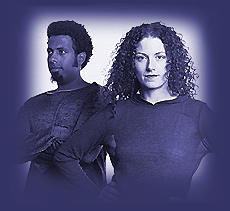Prevention and Treatment of Ingrown Hairs
-
Growing a beard or allowing hairs to grow well above the skin surface and the follicle opening may prevent the hair tip from growing into the skin and thereby preventing ingrown hairs formation. Not all people are willing or able to grow their hairs long enough to prevent their ingrowing and forming ingrown hairs.
Preventing the tip from "ingrowing" or removing the ingrown hairs' tips are the ways we can treat this condition. The shorter the hair is broken (such as in waxing, tweezing or plucking) or cut; the more time it has, and the greater the likelihood of its growing into the side of the follicle and producing ingrown hairs.

-
"Rounded" hair tips (produced by depilatories that are applied to the skin and hair surface) are less likely to penetrate the side of the follicle and cause ingrown hairs.
"Sharp" or "pointed" hair tips [such as those produced by shaving or breaking (waxing, tweezing, plucking)] are more likely to penetrate the side of the follicle and produce an "ingrown hair".Depilatories, however, are frequently irritating to the skin, and the odor produced is offensive to many people. Most of my patients have already elected to discontinue depilatories before they even see me for their ingrown hairs.
-
Permanent hair removal whether by EpiLight pulsed light (IPL, Intense Pulsed Light), or lasers - when they prevent the hair from regrowing or replace the larger "terminal" hair with a smaller, thinner, "baby" or "vellus" finer hair - can successfully treat "pseudofolliculitis", "ingrown hairs" or "razor bumps".Patients whom I have personally treated with EpiLight have found their dramatic improvement in ingrown hairs to be "LONG LASTING" (over 4 years and counting), and VIRTUALLY PAINLESS [less painful without anesthetic as compared to the more painful (even with topical anesthetic) electrolysis or laser treatment]. Patients have also reported fewer ingrown hairs.
The NORMALIZATION OF SKIN COLOR, and the REDUCTION OF PREVIOUS SCARRING are rapid and dramatic changes reported by my patients during the course of ingrown hair treatment. For more information about EpiLight pulsed light treatment as compared to other methods of hair removal and treatment for ingrown hairs please visit my Web site www.Epilight.net, which also has links to www.md-laserderm.com where you can see before and after photographs, including pictures of patients treated for ingrown hairs, of my results and obtain more information and a free online consultation.
-
Using topical "abrasives", "steroids" (cortisone), anti-inflammatory agents, retinoids, antibacterial agents, antibiotics, special razors or combs have not been very successful for patients’ Pseudofolliculitis (PFB), Ingrown Hairs (IH), or Razor Bumps (RB). Many patients have wasted considerable amount of time and money on ineffective or minimally effective over the counter or prescription products – creams or devices for ingrown hairs.
Processes such as waxing, plucking, tweezing, or close shaving routinely produce a worsening of Pseudofolliculitis, Ingrown Hairs and Razor Bumps. Waxing, plucking or tweezing may produce a damaged hair follicle or hair shaft that increases Pseudofolliculitis, Ingrown Hairs, or Razor Bumps.
Please contact Harvey H. Jay M.D. for treatment and other information